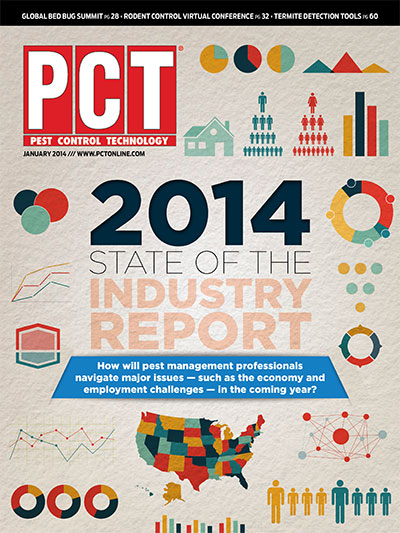Included in the January issue is a PCT feature based on Rand Hollon’s PCT M&A Virtual Conference presentation.Below are additional questions from that Q&A that did not appear in the magazine. PCT’s Brad Harbison conducted the Q&A with Hollon.
Brad Harbison: For acquiring companies, what would you recommend as first steps to finding companies in areas that are good geographical fits?
Rand Hollon: Number one, call me. Putting Buyers and Sellers together is our raison d’etre…it’s why Preferred Business Brokers is here.Number two, put yourself out there. Get involved with local pest organizations. State and local organizations like FPMA, GPCA, CPCO, and COSWFL create great platforms from which to meet and mingle with others. Work to create relationships with “competitor-friends” so that when the time comes for them to sell, they may seek you out as a path of least resistance.
BH: What have you seen as the biggest mistake made by a buyer after acquiring a new business?
RH: Over the years I’ve seen plenty. But one that comes to mind involved a Buyer who, immediately post-close, changed all of the Seller’s customer service packages to match his own [company’s service packages]. The Seller’s customers were primarily monthly. The Buyer’s packages were quarterly. The Buyer immediately changed everyone to quarterly and — oh, by the way — increased all their pricing too. Needless to say, the Buyer’s acquired customer integration tactic spooked a lot of freshly purchased customers who sought services elsewhere.
BH: Let’s look at the flip side. Looking at deals that you have brokered, what are some things that buyers have done to help make a pretty smooth transition?
RH: Finding those the supporting alliances within a Seller’s company. I worked with a Buyer that within a week before closing met with a key employee of the Seller — not the seller — but an employee, and gave that key employee a small “stay bonus”. It was very savvy on the Buyer’s part (with help from the Seller) to recognize a key “influencer” within the Seller’s business. When the announcement was made, many employees looked to the key employee - not the Seller- for direction. They followed his lead. The success of this acquisition was “out-of-the-park”. It worked out well for everyone involved.
BH: Can you give us an example of how M&As have changed, from a buyer’s perspective, since you became involved in this line of work 25 years ago?
RH: Years ago, pest company acquisitions (and how, or if, their success was even measured) were the exception to much more traditional growth efforts. “Fast and loose,” deal terms were all over the board. Measurement of acquisition successes, or failures, if considered at all, was often little more than a curious afterthought.
Today, acquisitions occupy an expressed part in the growth strategy of many organizations. The pest industry has become a more competitive place where profits are both more elusive, and cherished.
Because of this increased awareness of fiduciary duty, more focus is placed on measuring effectiveness of overall acquisition efforts. Was the Buyer’s money well spent? What did we do wrong? What did we do right? What should we change?
I’ve said it many times before, “Integration is where acquisition failure lives.”
As evidenced by more emphasis being placed on integration, it’s certainly over time become a lesson learned. There’s plenty more to acquisitions than buying customer data and shoving it into an operating system.
BH: Have you brokered any deals with lawn care companies and what are some similarities and differences doing those types of deals?
RH: Yes. We’ve brokered, and continue to broker, many L&O (lawn/ornamental spraying/fertilization) businesses. Compared to other states, the market here in Florida is quite large.
Similarities exist because, like most pest control businesses, L&O business is attractively route-based. Additionally, there are other items inherent in an L&O business that help make it an attractive acquisition target for a Buyer in the pest control business. Cross-selling opportunities to name one.
Differences within the deal lie within the L&O business itself. Often, because of higher capital expenditure requirements related to equipment and materials, profitability isn’t typically as high as a like-sized pest control company. This difference presents a value challenge to some acquirers.
Nevertheless, integration strategies run along the same lines as those relating to pest companies…the same things are important.
Preferred Business Brokers has provided the pest control industry with more than 25 years of M&A transaction support and closed deals. To learn more contact Rand Hollon at 800/633-5153.

Explore the January 2014 Issue
Check out more from this issue and find you next story to read.
Latest from Pest Control Technology
- Orkin Helps Local Youth Sports Program Design a ‘Killah’ New Logo
- ABC Home & Commercial Services Celebrates 75 Years in Business
- NPMA Academy Announces Full Schedule
- Truly Nolen Promotes Marchello, Christopherson and Bolton to Managerial Positions
- TruGreen Announces 2024 List of Top 20 U.S. Buggiest Cities
- Why PMPs Use Rodent Bait Stations
- NPMA’s Women’s Forum Encouraged Female Leadership, Growth Opportunities in Pest Control
- GoPest Expands to Birmingham and Huntsville (Ala.)





